To answer your two questions:
ADSL modems were usually >2Msps, often a multiple of 1.1Msps to simplify the signal processing later. E.g. the MTC20174 ADSL analog frontend had a 8.8Msps ADC/DAC. The reason for the higher than necessary sampling rate was the use the higher sampling rate to get more effective bits at signal frequency. This is a quite common trick as increasing sampling rate is often easier than reducing sampling noise in ADCs.
56k modems are ... special. They operated in an asynchronous fashion, something which ADSL later copied. They offered 56kbit/s down, but only 33.6kbit/s up. The reason of this lies in how they cheated. Back in the days of old, ISDN was considered the future and people who wanted to stay with current technology, upgraded to ISDN. ISDN could deliver two times 64kbit/s (plus a 16kbit/s signaling channel). Now to have ISDN available for customers, the whole telephone network has to support ISDN, or in other words has to be digital. V90 made use of that in that it knew the analog path in the connection was only that between the central and the last mile to the customer. The rest was digital. So, if your ISP had the equipment to interface digitally, they could inject digital samples into the phone network, which would be transmitted digitally until it reached the last central. This way it was possible to make use of the 64kbit/s that ISDN networks boasted, as you could, sample by sample transmit the analog signal and almost 100% recover it at the receiver end, as the analog wire was really short. The "encoding" used was simple PAM at the 8ksps / 8bits/sample that ISDN featured. But as signal noise and ADC/DAC linearity was far from offering perfect conditions, only 7bit of the 8bit samples were used. ADC/DACs used in these modems were usually 64ksps and 128ksps with 8bit (we are talking about the second half of the 90s, so these were state of the art chips that didn't cost an arm and a leg and could be used in a modem that should cost less than $200).
So, why was this only used down stream? Because the receiver had to be synchronized to the sender. While it was possible to add a synchronizer (aka clock recovery and PLL) to the modem, nobody would have paid for the changes in telephone infrastructure to synchronize them. So upstream was still V34bis with its QAM.
And to answer the question you haven't asked:
If you really want to build a modem for digital data transfer I recommend you start small. Build an PAM system, that can do something like 2-100kbit/s over a few 100m. Then go to FSK and see how that increases wire length that you can use. Then upgrade to PSK and finally to QAM. And in the end, if you feel like it, you can go for OFDM like *DSL does. If you don't follow this path from simple encodings to more complex encodings, but try to build a complex encoding from the beginning, I can guarantee you that you will run into so many issues that you will have no idea how to fix any of them. You will need the experience from the simple systems.
And a word of caution: You are building a system which puts RF signals onto an ideal antenna. Any telephone wire, no matter whether you terminate it correctly or not, will act as an antenna with high emission rate. If you do not control the signal power and frequencies correctly, you will violate the emission limits and create interference that will annoy the heck out of other people and get you a nice fine.
